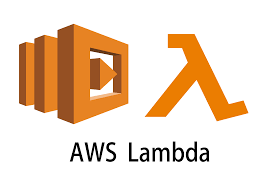[AWS] CI/CD by Bitbucket Pipelines
Ref: Serverless application with CI/CD based on AWS and Bitbucket Pipelines [基于Django,可以参考]
Goto: https://apiit.atlassian.net/wiki/spaces/ITSM/pages/230031626/API+Development+Practices
Ref: YAML 语言教程
Ref: Deploying a Python Flask application to AWS Lambda With Serverless Framework and CircleCI [GitLab 的 pipeline]
Ref: More than 'Hello World in Lambda': Build and Deploy Python Flask APIs in AWS Lambda via CDK [Zappa与CodeDeploy的竞争关系]
热身:自动配置一个容器
Ref: Bitbucket CI/CD pipelines configuration

通过点击右边栏“设置”,可输入变量的值。

CICD的结果:自动上传镜像到docker-hub。
Bitbucket Pipelines
一、bitbucket-pipelines.yml配置
如果repo底下有bitbucket-pipelines.yml這個檔案,bitbucket server上的CI/CD runner就會開始解析這個yml檔裡的內容,並按照裡面來做事。
-
Python工程的模板
bitbucket-pipelines.yml YAML文件。
# Template python-build
# This template allows you to validate your python code.
# The workflow allows running tests and code linting on the default branch.
image: python:3.8
pipelines:
default:
- parallel:
- step:
name: Test
caches:
- pip
script:
- if [ -f requirements.txt ]; then pip install -r requirements.txt; fi
- pip install pytest
- pytest -v tests/* --junitxml=test-reports/report.xml
- step:
name: Lint code
script:
# Enforce style consistency across Python projects https://flake8.pycqa.org/en/latest/manpage.html
- pip install flake8
- flake8 . --extend-exclude=dist,build --show-source --statistics
-
另一个模板
Ref: 打造自己部落格的CI/CD pipeline,以BitBucket環境為例
# 聲明image的話 Bitcucket上的runner就會知道是要走docker container模式,這邊我們要用alpine這個linux os,然後上面已經安裝好最新版的node.js
image: node:current-alpine
pipelines:
# 只有在push到master 或 PR進master時才跑pipeline
branches:
master:
- step:
caches:
- node
script:
# alpine上的OS library管理工具叫`apk` 這句script 等於Mac OS上的 brew update, 然後順便裝一下openssh
- apk add --update --no-cache openssh
# alpinen雖然本身很輕量(只有5mb),但是它也缺少了很多一般OS上會有的程式,這裡是在安裝 tar, python, g++, make...這些東西,因為它們是我們之後gatsby build時的那些plugin可能會用到的程式
- apk update && apk add tar python g++ make bash zlib-dev libpng-dev&& rm -rf /var/cache/apk/*
# access日本那邊的一個alpine軟體庫 以取得 libvips這個程式(一個node.js的影像處理library,它被我們的gatsby-transformer-sharp這個plugin所需要用到,因為我們在gatsby build的過程裡會對圖檔進行優化)
- apk add --update --no-cache --repository http://ftp.tsukuba.wide.ad.jp/Linux/alpine/v3.10/main/ vips-dev
# 如果真正放blog source的資料夾跟 `bitbucket-pipelines.yml`不是同一層的話 不要忘了要再cd進去,在現在的template底下是在同一層,所以無須執行
# - cd ./myblog
# 給予權限,這是用來排除 `sharp EACCES: permission denied, mkdir '/root/.npm'`這個問題
- npm config set user 0
- npm config set unsafe-perm true
# 終於開始看到熟悉的指令,安裝寫在package.json裡的那些套件
- npm install
# 開始build,然後不產生sourceMap,以減少網路傳輸量和部署的速度
- npm run buildWithouSourceMap
# 用tar 把 gatsby產生出來在public(這個template gatsby build完之後放靜態檔案的資料夾)裡的檔案做壓縮,壓縮檔取名為 `release.tar.gz`
- tar zcvf release.tar.gz public
# ssh(所以剛剛上面才要安裝openssh)到要部署的遠端server,把檔案推過去之前先刪掉之前的所有檔案,
- ssh your_account@your_server_ip 'rm -rf /path/to/your/blogFiles/* && exit'
# 再把現在這個container底下剛剛做好的壓縮檔scp到server上放blog檔案的路徑底下
- scp release.tar.gz your_account@your_server_ip:/path/to/your/blogFiles
# 再登入一次 把剛剛scp過的檔案解壓縮,從public資料夾那一層移動所有的檔案到nginx上設定好放blog檔案的那一層,最後把壓縮檔跟已經空的了public資料夾刪掉,再登出
- ssh your_account@your_server_ip 'cd /path/to/your/blogFiles && tar zxvf release.tar.gz && mv ./public/* ./ && rm release.tar.gz && rm -r ./public && exit'
# 壓縮後再傳輸可以大大減少scp的傳輸時間,不然檔案太多,會傳很久
二、Deploy on AWS
Goto: https://bitbucket.org/bitbucketpipelines/workspace/projects/TAT [官方例子]
-
S3
Example: how to upload files to S3 using a Bitbucket Pipe.
image: atlassian/default-image:2 pipelines: default: - step: script: - mkdir artifact - echo "Pipelines is awesome!" > artifact/index.html artifacts: - artifact/* - step: deployment: production script: - pipe: atlassian/aws-s3-deploy:0.3.7 variables: AWS_ACCESS_KEY_ID: $AWS_ACCESS_KEY_ID AWS_SECRET_ACCESS_KEY: $AWS_SECRET_ACCESS_KEY AWS_DEFAULT_REGION: 'ap-southeast-2' S3_BUCKET: 'bbci-task-s3-deploy-test' EXPIRES: '2018-10-01' LOCAL_PATH: 'artifact' ACL: 'public-read'
-
Lambda

Example: how to deploy a Lambda function using a Bitbucket Pipe.
pipelines:
default:
- step:
name: Build and package
script:
- apt-get update && apt-get install -y zip
- zip code.zip index.js
artifacts:
- code.zip
- step:
name: Update Lambda code
script:
- pipe: atlassian/aws-lambda-deploy:0.2.1
variables:
AWS_ACCESS_KEY_ID: ${AWS_ACCESS_KEY_ID}
AWS_SECRET_ACCESS_KEY: ${AWS_SECRET_ACCESS_KEY}
AWS_DEFAULT_REGION: ${AWS_DEFAULT_REGION}
FUNCTION_NAME: 'my-function'
COMMAND: 'update'
ZIP_FILE: 'code.zip'
# The pipe exports the newly published Lambda version to a file.
artifacts:
- pipe.meta.env
# You can optionally use AWS Lambda aliases to map the newly published Lambda
# function version to conceptual environments.
- step:
name: Deploy to Test
deployment: test
script:
# Read the 'function_version' from the update pipe into environment variables.
- source pipe.meta.env
# Point the test alias to the function.
- pipe: atlassian/aws-lambda-deploy:0.2.1
variables:
AWS_ACCESS_KEY_ID: $AWS_ACCESS_KEY_ID
AWS_SECRET_ACCESS_KEY: $AWS_SECRET_ACCESS_KEY
AWS_DEFAULT_REGION: $AWS_DEFAULT_REGION
FUNCTION_NAME: 'my-function'
COMMAND: 'alias'
ALIAS: 'test'
VERSION: '${function_version}'
- step:
name: Deploy to Staging
deployment: staging
script:
# Read the 'function_version' from the update pipe into environment variables.
- source pipe.meta.env
# Point the 'staging' alias to the function.
- pipe: atlassian/aws-lambda-deploy:0.2.1
variables:
AWS_ACCESS_KEY_ID: $AWS_ACCESS_KEY_ID
AWS_SECRET_ACCESS_KEY: $AWS_SECRET_ACCESS_KEY
AWS_DEFAULT_REGION: $AWS_DEFAULT_REGION
FUNCTION_NAME: 'my-function'
COMMAND: 'alias'
ALIAS: 'staging'
VERSION: '${function_version}'
- step:
name: Deploy to Production
deployment: production
script:
# Read the 'function_version' from the update pipe into environment variables.
- source pipe.meta.env
# Point the 'production' alias to the function.
- pipe: atlassian/aws-lambda-deploy:0.2.1
variables:
AWS_ACCESS_KEY_ID: $AWS_ACCESS_KEY_ID
AWS_SECRET_ACCESS_KEY: $AWS_SECRET_ACCESS_KEY
AWS_DEFAULT_REGION: $AWS_DEFAULT_REGION
FUNCTION_NAME: 'my-function'
COMMAND: 'alias'
ALIAS: 'production'
VERSION: '${function_version}'
三、Django serverless app by Zappa
Ref: Project template for Django serverless app
image: python:3.6.1
pipelines:
tags:
release-*:
- step:
caches:
- pip
script:
- ./ci.sh prod1
staging-*:
- step:
caches:
- pip
script:
- ./ci.sh stage1
branches:
master:
- step:
caches:
- pip
script:
- ./ci.sh dev1
ci.sh 内容如下:
#!/bin/bash
setup () {
echo ------- SETUP -------
apt-get update
apt-get install -y zip
pip install virtualenv
virtualenv --python=python3 env
source env/bin/activate
pip install -r requirements.txt
return $?
}
tests() {
echo ------- TESTS -------
pip install -r requirements-test.txt
tox
return $?
}
deploy() {
echo ------- DEPLOY -------
echo $1
pip install awscli
aws s3 cp s3://$CMDB/zappa_settings.json .
zappa update $1 || zappa deploy $1
zappa certify $1 --yes
zappa manage $1 "migrate --noinput"
zappa manage $1 "collectstatic --noinput"
return $?
}
setup && test && deploy $1
四、Flask serverless app by Zappa
Goto: https://superuser.blog/serverless-meets-ci-cd/
Serverless meets CI CD

"botocore.exceptions.ProfileNotFound: The config profile (amplify-sat) could not be found"
有俩个办法:
AWS codepipe:先打包成zip,之后再通过cdk 去 deployment,而不是zappa deploy。
Bitbucket的话:
# Configuring AWS credentials - aws configure set default.region us-east-1 - aws configure set aws_access_key_id 'xxxxxxxxxxxxxxxxxxxxxxxxxxxx' - aws configure set aws_secret_access_key 'xxxxxxxxxxxxxxxxxxxxxxxxxxxxxxx' # - mkdir ~/.aws # - cp .aws/config ~/.aws/config # - cp .aws/credentials ~/.aws/credentials
结合:Using environment variables (First look at BitBucket Pipelines, part 3)
/* implement */
End.




【推荐】国内首个AI IDE,深度理解中文开发场景,立即下载体验Trae
【推荐】编程新体验,更懂你的AI,立即体验豆包MarsCode编程助手
【推荐】抖音旗下AI助手豆包,你的智能百科全书,全免费不限次数
【推荐】轻量又高性能的 SSH 工具 IShell:AI 加持,快人一步